- ∼ 100 billion stars
- Large spiral arms outlined by hot stars
- Large dust lanes
- Bright centre
- Size: ∼ 50000 pc (50 kpc) across
- Bright patches are clumps of young stars
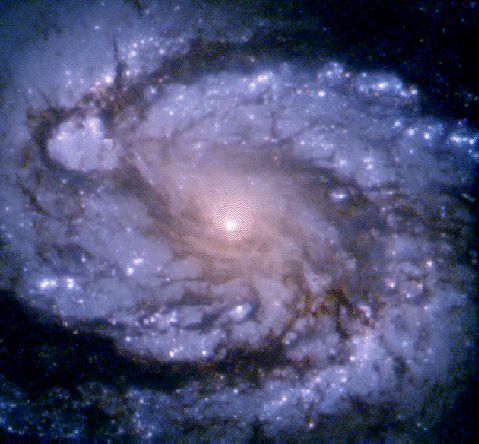
M100: A Grand Design Credit: NASA
Just as the Sun is "our" star, the Milky Way is "our" galaxy.
Unfortunately we see it from the inside, so first a look at a galaxy which is reasonably similar: M100. Large spiral galaxy, Note:
|

M100: A Grand Design Credit: NASA |
Looked at from the side, the Milky way looks a bit like
NGC 4565 (ignore the foreground stars): note
|
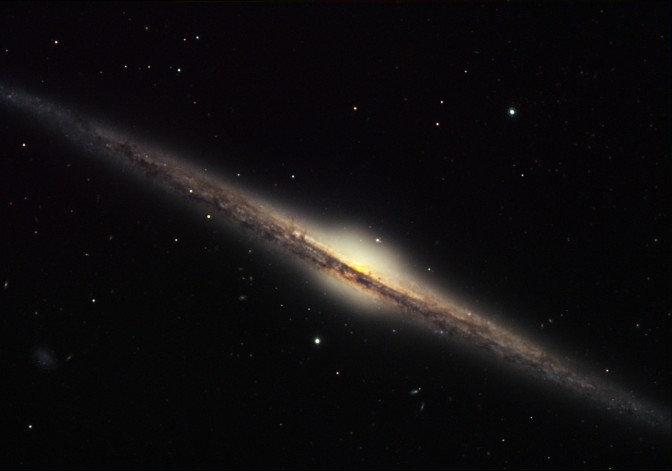 Credit: Bruce Hugo and Leslie Gaul, Adam Block (KPNO Visitor Program), NOAO, AURA, NSF |
| So the Milky Way probably looks like this | 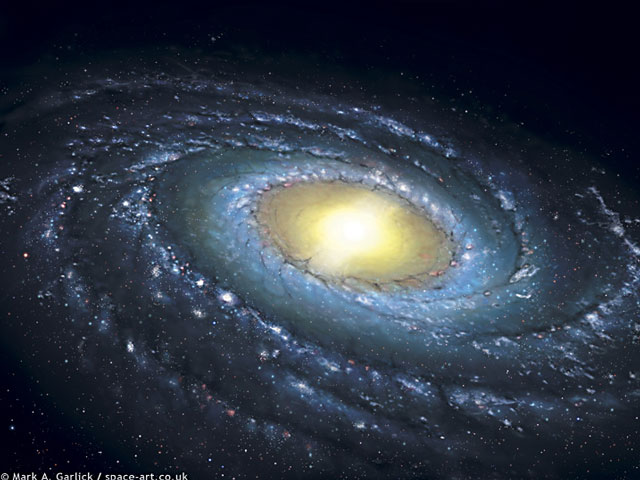 Illustration Credit & Copyright: Mark Garlick (Space-art |
| This is an old picture that shows the whole Milky Way | 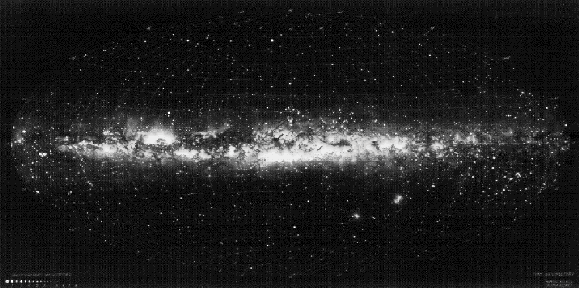 7,000 Stars And The Milky Way Credit: Knut Lundmark (Copyright: Lund Observatory) |
| and we can pick out the same general structure in radio waves, but note very intense source at centre | 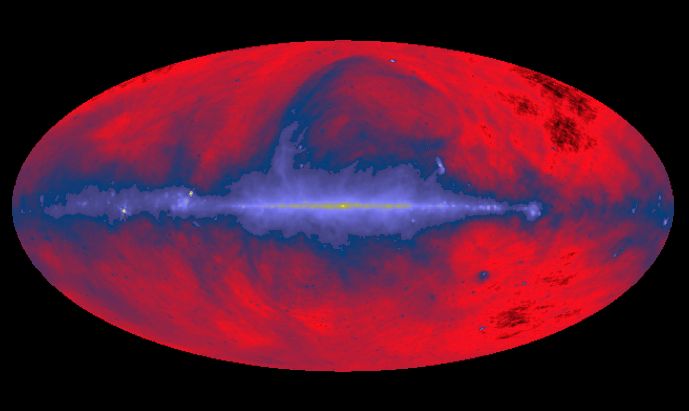 Credit: C. Haslam et al., MPIfR, SkyView |
| and γ-rays from the EGRET satellite | 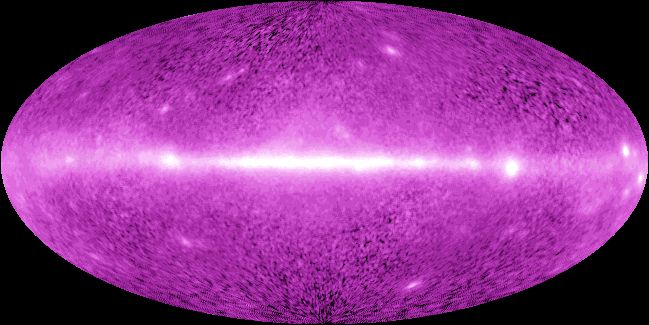 Credit: EGRET Team, Compton Observatory, NASA |
| Galactic Centre Not visible directly (too much dust) | 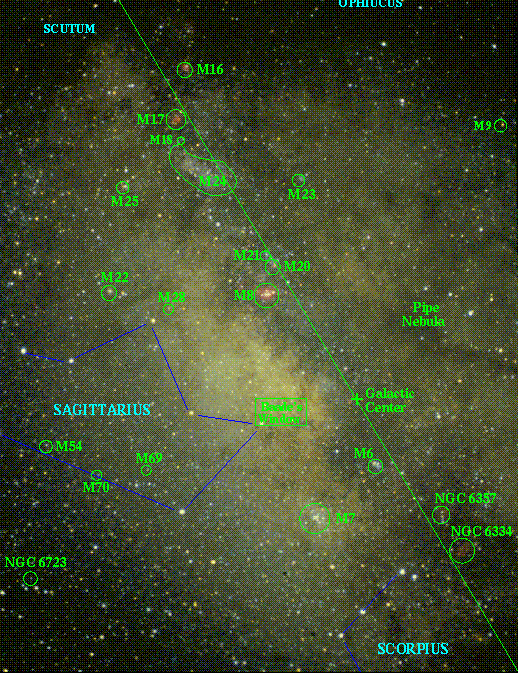 Credit: W. Keel (U. Alabama, Tuscaloosa), Cerro Tololo, Chile |
but strong radio source
| We can see through the dust (partially) with infra-red: note how dense the star field is | 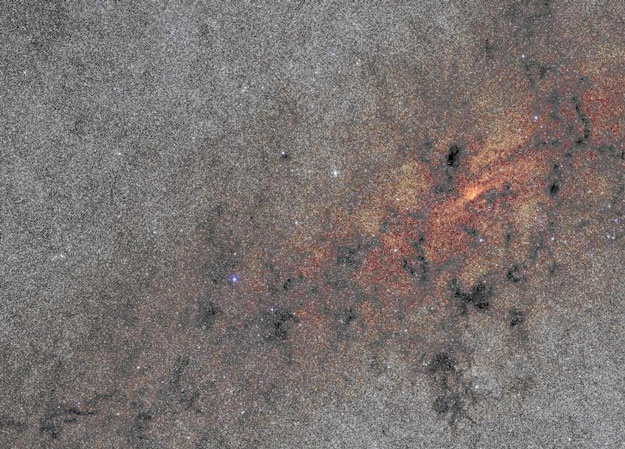
Credit: 2MASS Project, UMass, IPAC/Caltech, NSF, NASA |
| and X-rays | 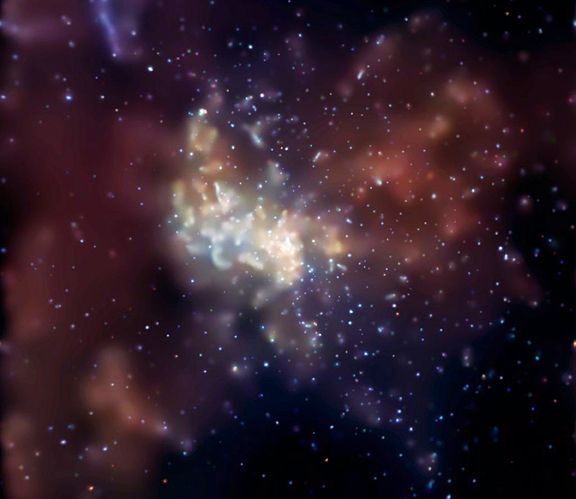 Credit: Fred Baganoff (MIT), Mark Morris (UCLA), et al., CXC, NASA Credit: Fred Baganoff (MIT), Mark Morris (UCLA), et al., CXC, NASA |
| Centre is very intense (and confused) source of radio waves (note the old supernova remnant) | 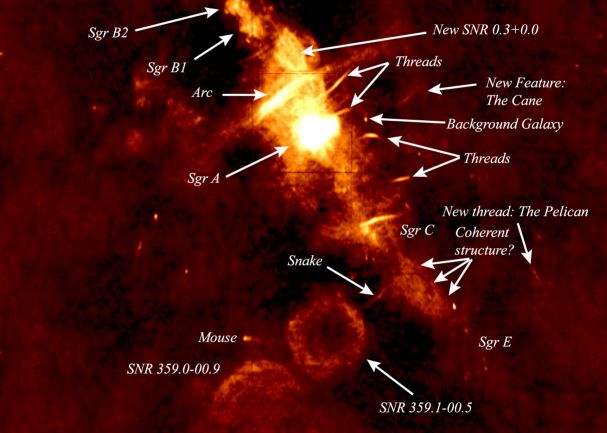
Credit: N. E. Kassim, D. S. Briggs, T. J. W. Lazio, T. N. LaRosa, J. Imamura (NRL/RSD) |
| Close to centre a lot of rapidly moving (300 km/s) hot (i.e. ionised) gas(Gravitational field at centre of galaxy should be very small, so would expect velocities to be small.) | 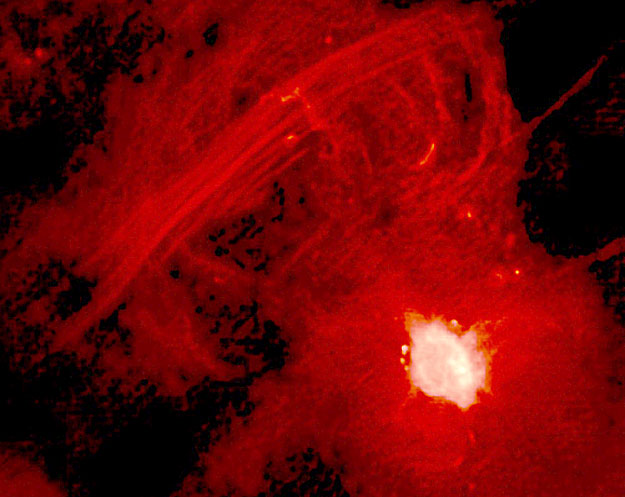 |
and hot stars
Could be very dense cluster of stars..........but note M31 (Andromeda), M100 and many others show a star-like central nucleus
| and very rapidly moving stars | 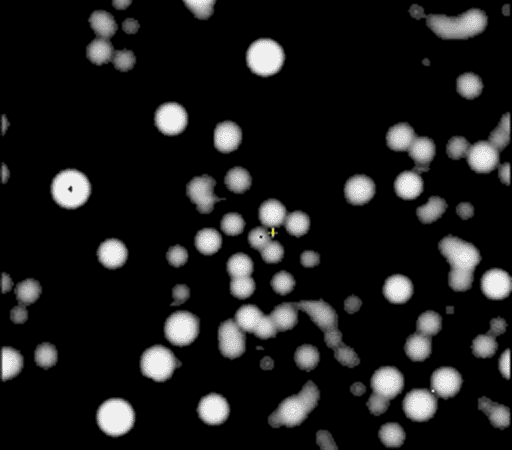 Credit: A. Eckart (U. Koeln) & R. Genzel (MPE-Garching), SHARP I, NTT, La Silla Obs., ESO Credit: A. Eckart (U. Koeln) & R. Genzel (MPE-Garching), SHARP I, NTT, La Silla Obs., ESO |
| Now there seems to be evidence for multiple black holes: very intense small X-ray sources close to the centre | 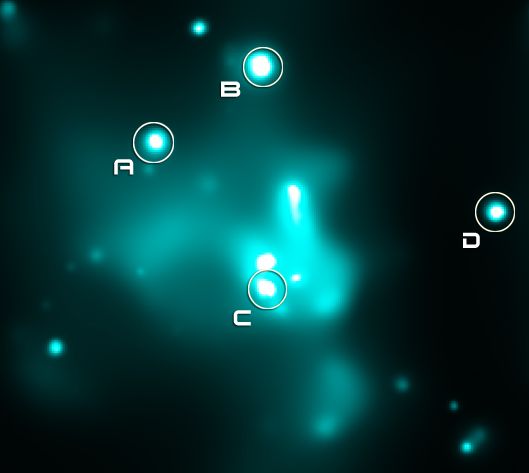
Credit: M. P. Muno (UCLA) et al., CXC, NASA |
Size of centre < 1pc
Mass of object ∼ 3000000 M₀
| Just recently have tracked star as it came within 17 light hours (3x distance to Pluto) of centre | 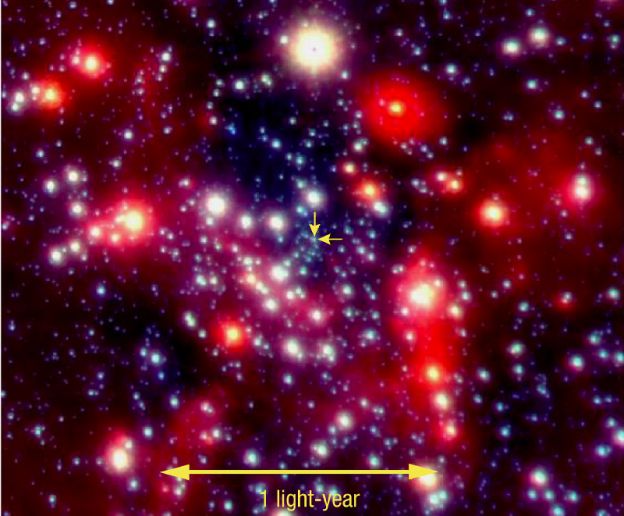 Credit: Rainer Schdel (MPE) et al., NAOS-CONICA, ESO |
| Whole picture is consistent with a very large black hole at centre, but not nearly as active as we see in other galaxies: e.g. this shows gas at the centre of NGC 1365 | 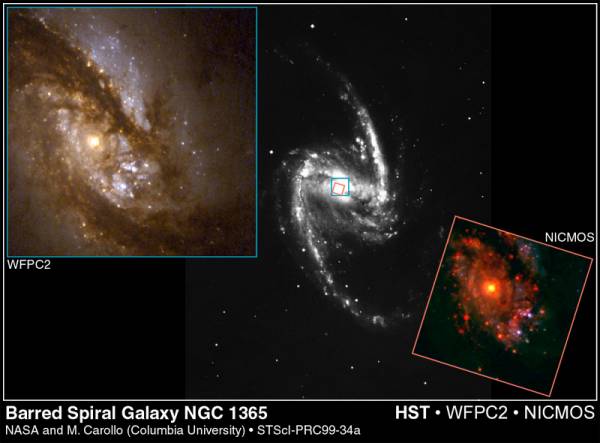
Credit: Ground-based image: Allan Sandage (Carnegie Observatories), John Bedke (CSC, STScI) WFPC2 image:John Trauger (JPL), NASA NICMOS image: C. Marcella Carollo (JHU, Columbia U.), NASA, ESA |
| and if you heard "As it Happens" on Tuesday... Star SDSS J090745.0+24507 is escaping from galaxy at ∼ 500 km/s. velocity points back towards galactic centre. Probably was one part of a binary system, companion was absorbed into black hole and speed acquired from black hole | 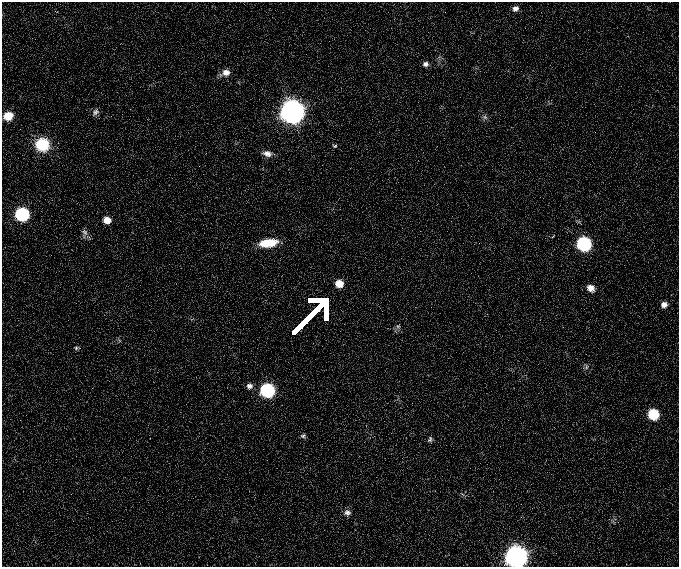 Credit: SDSS Collaboration (www.sdss.org) |
So are all galaxies the same?